There’s one major challenge that applies to all levels of agriculture, from starting a garden to running an orchard, and everything that falls between.
It’s a shared challenge that growers face regardless of location, climate, or economic resources.
It’s pests – whether it’s weeds, ants, beetles, caterpillars, goats, sheep, cats, or even other humans (the last one being the peskiest of all), pest management is a universal problem for farmers, gardeners, ranchers, and more.

Regardless of the pest that plagues your garden (let’s go with garden for simplicity’s sake, but keep in mind this applies to nearly any outdoor growth project), integrated pest management (IPM) practices can most likely be applied.
So, What Is IPM?
Economic treatment of pests is the goal of IPM. In order to accomplish this goal, IPM practices sustainability, practicality, and environmentally safe pest control methods. It focuses on a step-oriented model to effectively manage pests independently at home. Here are the general steps followed for IPM.
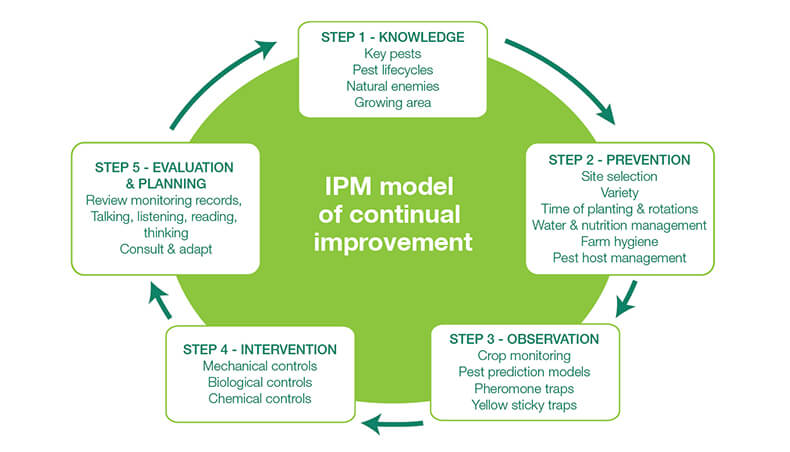
Related Post: Why Pesticides Are Actually Important for Agricultural Sustainability
Benefits of IPM
Self-reliance and Independence
As previously mentioned, IPM helps cultivate feelings of self-sufficiency and independence. How/why?
To best answer that question, let’s first take a detour: many people get roped into the idea that to manage a garden space, they need the “latest and greatest” tools, pesticides, herbicides, etc, and without these, they can’t effectively garden. It also appears to be the easiest option to go this route because it’s quicker and requires less research/thought to apply. However, as already discussed, the “latest and greatest” options are typically not economically affordable, and likewise, not environmentally friendly.
In short, it comes down to what your objectives are:
- Fast, easy, potentially environmentally degrading, and not cost effective
- Slower, increased thought/care, environmentally friendly, and cost efficient
With this small detour now successfully routed through, let’s go back to the question, how/why does IPM increase feelings of self-sufficiency and independence?
IPM encourages these feelings because you are creating the solutions to your pest problems yourself. You are not going to buy the quick-fix at the store, but instead utilizing materials at home, learning about the local environment, and therefore pests existing within it, and knowing the decrease in your pest problem is a direct result of personally cultivated actions you took. You physically create your pest control methods, and in doing so, save money and the environment.
Better Relationship With Land
Hinted from the previous section, IPM cultivates a deeper relationship with the natural world. By engaging with land directly (i.e working, observing, and learning from land), you develop a powerful connection, respect, and gratitude as you begin understanding better how land communicates and what land needs. It’s a reciprocal relationship in which both you and land benefit as you interact with one another. You receive quality crops that you personally helped sew, as well as promote physiological benefits.
In Robin Kimmerer’s book Braiding Sweetgrass, she explains that recent studies have shown that playing in soil (i.e. gardening) releases the hormone oxytocin as a physiological response to the smell of soil humus. As Kimmerer puts it, “Breathing in the scent of Mother Earth stimulates the release of the hormone oxytocin, the same chemical that promotes bonding between mother and child, between lovers.”
The physiological benefits of interacting with land on the intimate level that gardening offers, and more specifically, IPM’s approach to gardening, allows the release of oxytocin which is responsible for warm, fuzzy, comfortable feelings and has been documented to decrease anxiety and stress.
Increased knowledge of local pests and treatments
By engaging in IPM, you become informed through self-research on local pests and at-home control methods. Aside from helping solve your personal pest issues, a great benefit of this is that you become someone who can help friends/family manage their pest problems!
As a Peace Corps Volunteer in Senegal, West Africa, I was able to be this person for my local community in Mankono Ba, Sedhiou. I identified a spider mite issue the local women’s garden was experiencing and quickly found economically feasible and locally available options for these women to implement to help alleviate this pesky problem. I suggested using both chemical and mechanical controls.
- Chemical: Soap/milk washes! For less invasive spider mite ridden areas, I suggested spraying/hand-washing crops with either a soapy water solution, or with milk. The slight acidity revolted spider mites, and it was an extremely affordable and practical option.
- Mechanical: Unfortunately, in areas the spider mite infestation was severe, physical removal of the affected crop was necessary.
The knowledge I was able to impart to these women about how to treat their spider mite issue empowered them, and through that, empowered me. It helped instill feelings of independence and self-sufficiency in both me and the women. It cultivated a deeper relationship with the land as we observed the issue and watched it resolving itself through our intervention. Lastly, it allowed us to be able to identify this pest in the future and help those we may stumble upon who are experiencing spider mite issues.
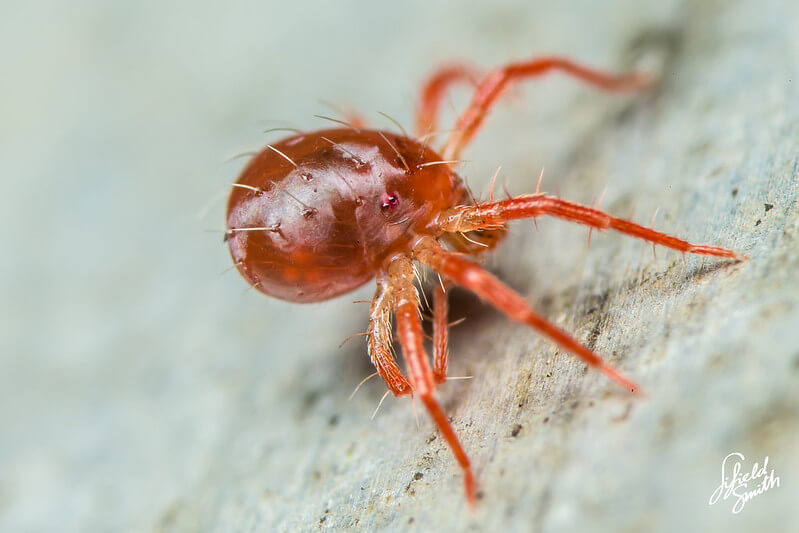
What is the IPM Process?
1. Knowledge
- Learn About Local Pests
- Identification
- Preferred habitat/food
- Mating/reproduction behavior
- Life cycles (boom/bust cycles — refer to image below)
- Natural enemies
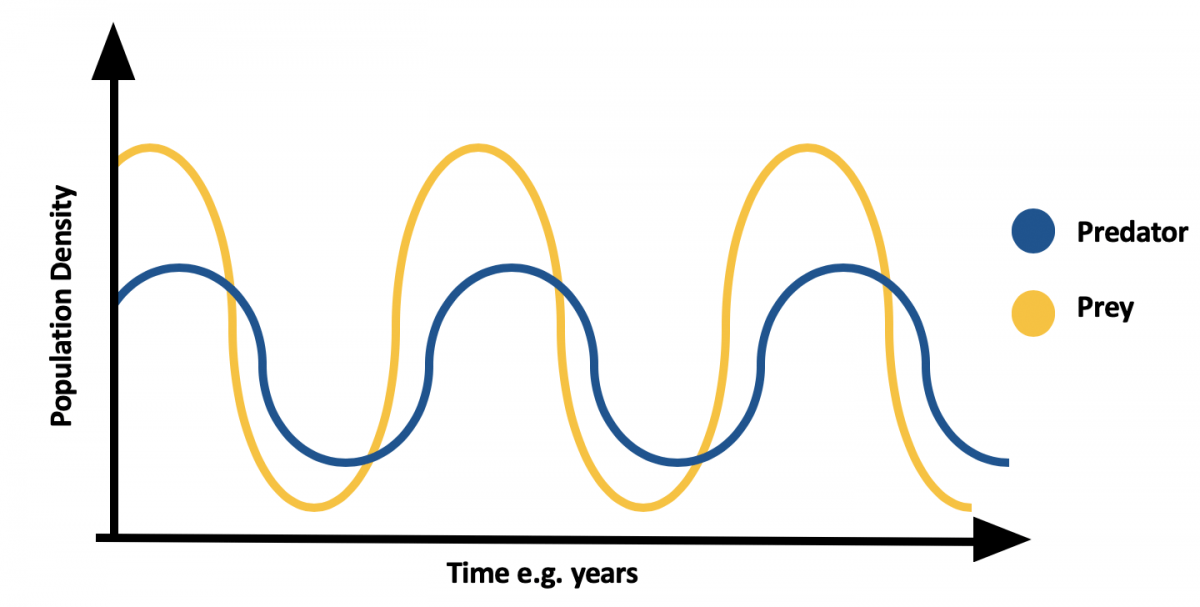
2. Prevention
- Site Selection
- Garden locations to minimize pest impacts
- Avoiding pest-ridden places
- Variety
- Intercropping/polycropping to minimize widespread pest plagues.
- Time of Planting and Rotation
- Understanding pest life cycles for planting and rotation outside peak pest boom cycles.
- Water and Nutrition Management
- Healthy crops make plants more resilient (in case of pest attack).
- Garden hygiene
- Sanitizing tools helps prevent the spread of pests between plants and across land.
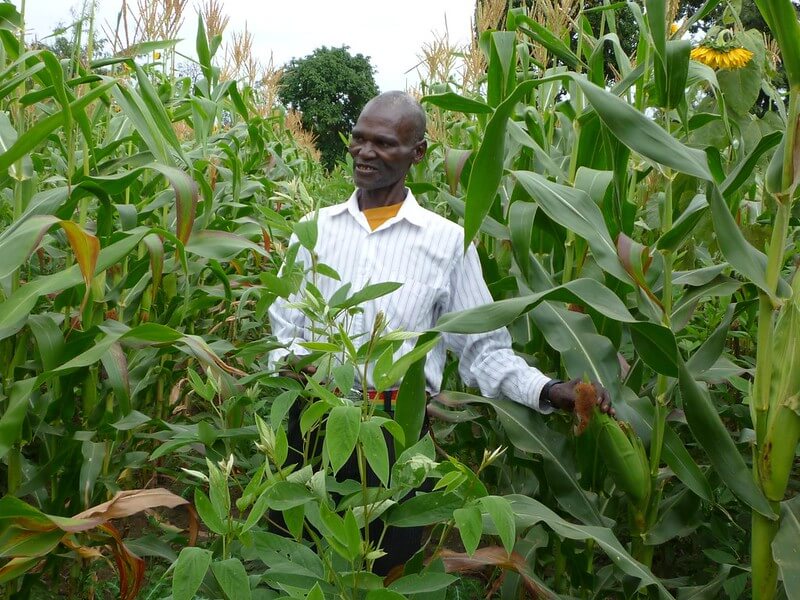
3. Observation
- Crop Monitoring
- Keep records of pest species present, timing of appearance, location, and what pests were consuming.
- Sticky Traps
- Bug identification
- Also beneficial in helping to decrease pest populations
- Camera Traps
- Animal identification
- If camera is unavailable, identify tracks
4. Intervention
- Mechanical Controls
- Physical removal of pests through pulling weeds, cutting plants, or hand picking insects.
- Biological Controls
- Use of natural pest predators or plant diseases that inhibit weed growth.
- Chemical Controls
- Application of herbicides or insecticides (for purposes of IPM, generally plant-based).
5. Evaluation and Planning
- Review Records
- Talk/Think/Write/Consult and Adapt Accordingly
IPM is Sustainable
Economic actions against pests often mean environmentally safer actions. Because of higher prices for chemical pesticides and herbicides, home remedies (nonchemical options) are often implemented to help cut down pest management costs.
Low cost is a big reason to like IPM. It creates self-reliance and capability while utilizing pest control tactics that are environmentally safe and friendlier for our wallets.
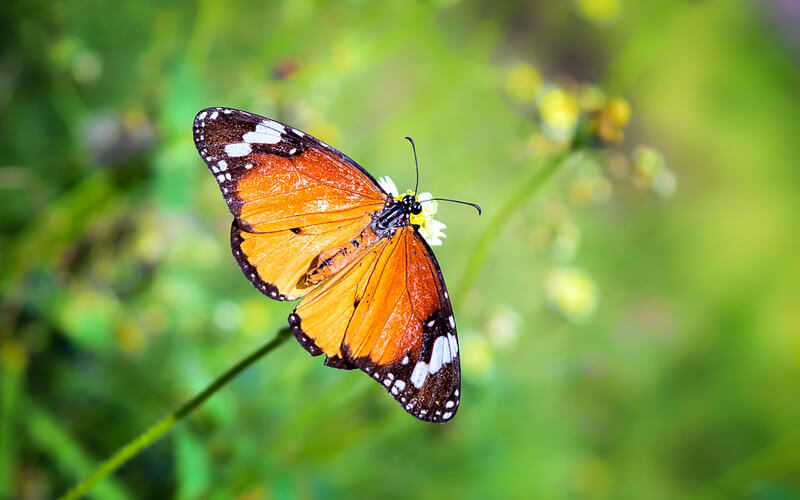
What are Common IPM Program Methods?
Weeds
Mechanical: Weed by hand or do scuffle hoeing.
Chemical: A natural and home-available way to treat weeds is by removing the top of the plant and pouring vinegar on the exposed root system.
Bugs and Insects
Biological: Attracting songbirds to your garden space is a great tool for reducing bug populations. Here’s an article with tips on how to do it.
Chemical: Spraying neem oil is an excellent natural insecticide to ward off unwanted visitors.
Animals
Mechanical: Trapping and relocating techniques work the best. Using live traps (i.e., Sherman traps) is important to minimize harm against animals in need of relocation. You can also create barriers around your garden space with a fence or natural barriers like bushes and shrubs.

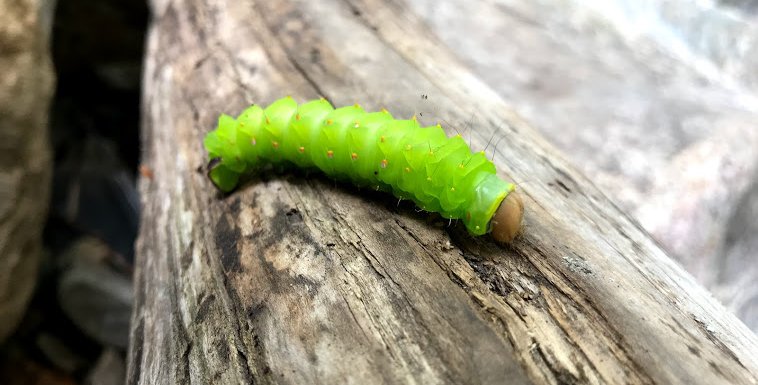



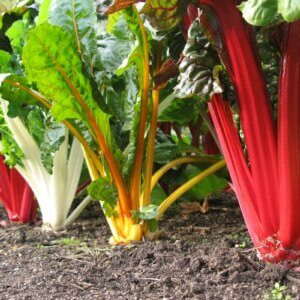

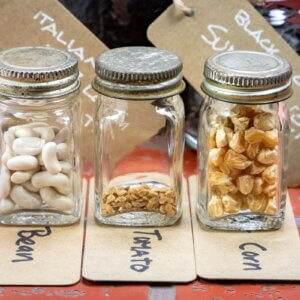


































Leave a Reply